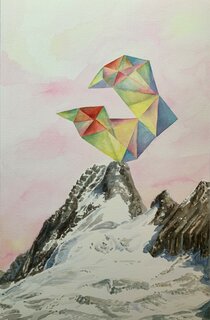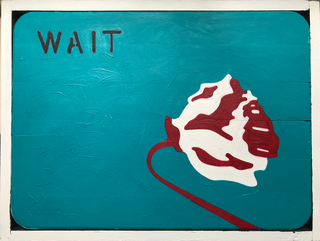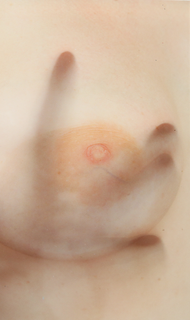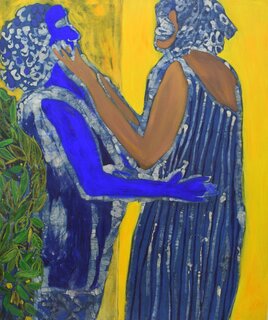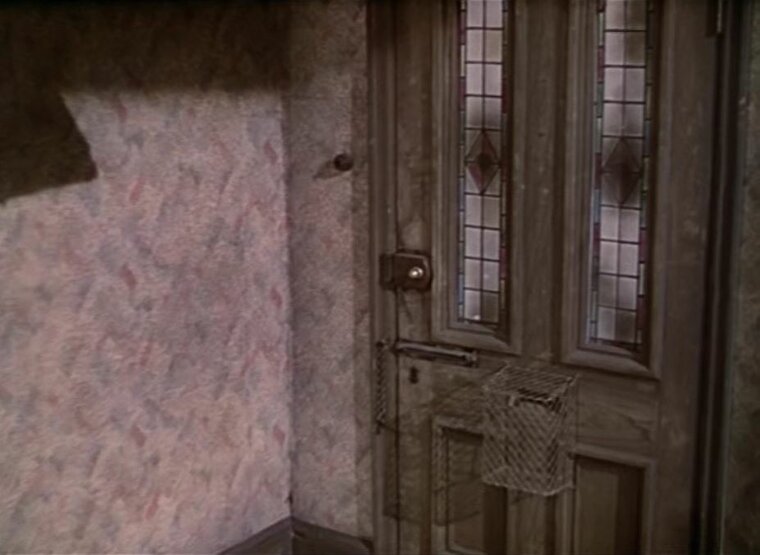
Suky Best has a long-running fascination with the clash occasioned by encounters between well-groomed domestic interiors and nature run wild. In The Journey Home (1999) she ‘wanted to make an image as if the room was being menaced by vegetation…Trees might burst through windows to claim back their own.’ She is also inspired by specific buildings, as in Walking Meditation (2000) made in and for Cleeve Abbey, a thirteenth century Cistercian ruin in Somerset. A third concern is with the way the simplification of an image can disturb perception. This is achieved in the video series 'Wild West' (2005), made in collaboration with Rory Hamilton, in which a group of cowboys on horses riding across a plain is reduced to a shimmering volatile bock of colour from which all other information has been removed.
Four scenes each just over a minute long showing a collage of filmed owls placed on top of a scene from a British film of the 1940’s (This Happy Breed 1941). In each scene owls appear and disappear. The work comes from ideas of transgressive animals within children’s fiction, especially Beatrix Potter’s, A Tale of Two Bad Mice, 1902 where two mice enter a dolls house, and, finding all the food to be fake, smash it up in anger and disappointment
The room, a film set, is used as a constructed fictional space, like a dolls house but for adults. The collage is deliberately crude to allow a space for the viewer to fill in the gaps and make the scene more real; what they are watching isn’t real.
54 Morning Lane (2010)
These are the birds that live in the house. An ordinary house where you, or I, could be live. When no one is looking they appear, becoming visible in the empty spaces; when your back is turned.
These are the real inhabitants.
They have always been there.
There since the space was enclosed by bricks; displaced from their trees, resentful.
Living in the walls, the cracks between, having a life amongst us. In moments of despair they can become visible to us, but we don’t notice.
When the house is empty they come out to play.
When our backs are turned they help themselves.
Camouflaging themselves against wallpaper, merging with the patterns, in control of their opacity.
And
Always angry, they change the space just by being there.
Eating cake, biting at the backs of chairs ill tempered and bad mannered.
If you don’t believe me, perhaps you just haven’t looked hard enough.
For Best the work ‘refers to the interior spaces of computer games and their first person point of view’, and although the piece is structured loosely round alternating views of corridors and object groupings, the whole is constructed as a continuous fly-through. The camera finds a path between all these contrasting elements, unifying everything it encounters into a sequence of surfaces to be negotiated. But this unifying process also generates the many anomalies of scale and texture that reveal the nature of the work’s construction. Here, perhaps, one might think of the way the inexperienced gamer finds himself bumping against the pixilated boundary wall of the game’s universe. But although gaming environments are often hostile and dangerous, they are never uncanny, as they are in Betty’s house, which the humans have abandoned, leaving an eerily empty scene reminiscent of that described in the story of the Mary Celeste.
